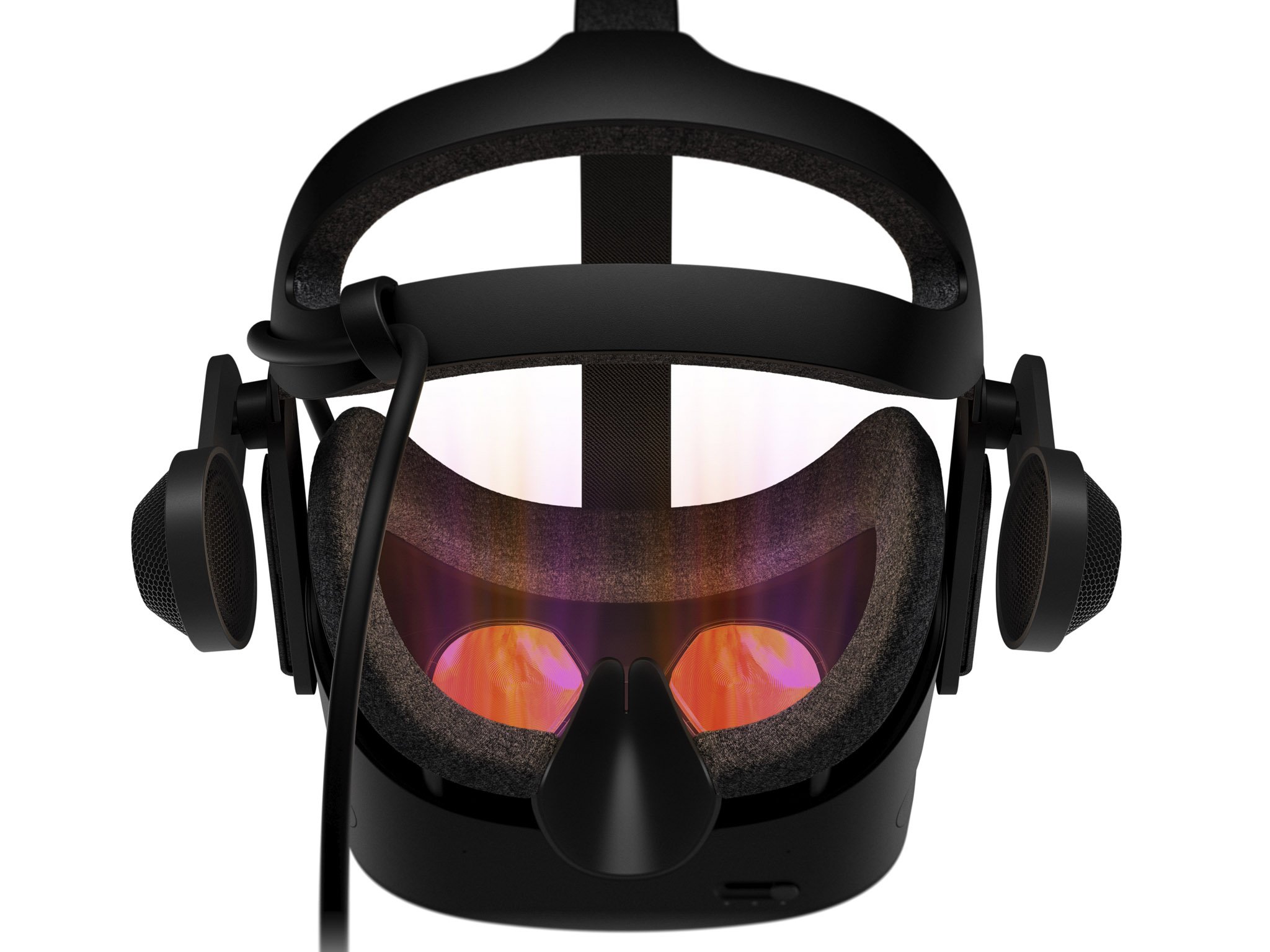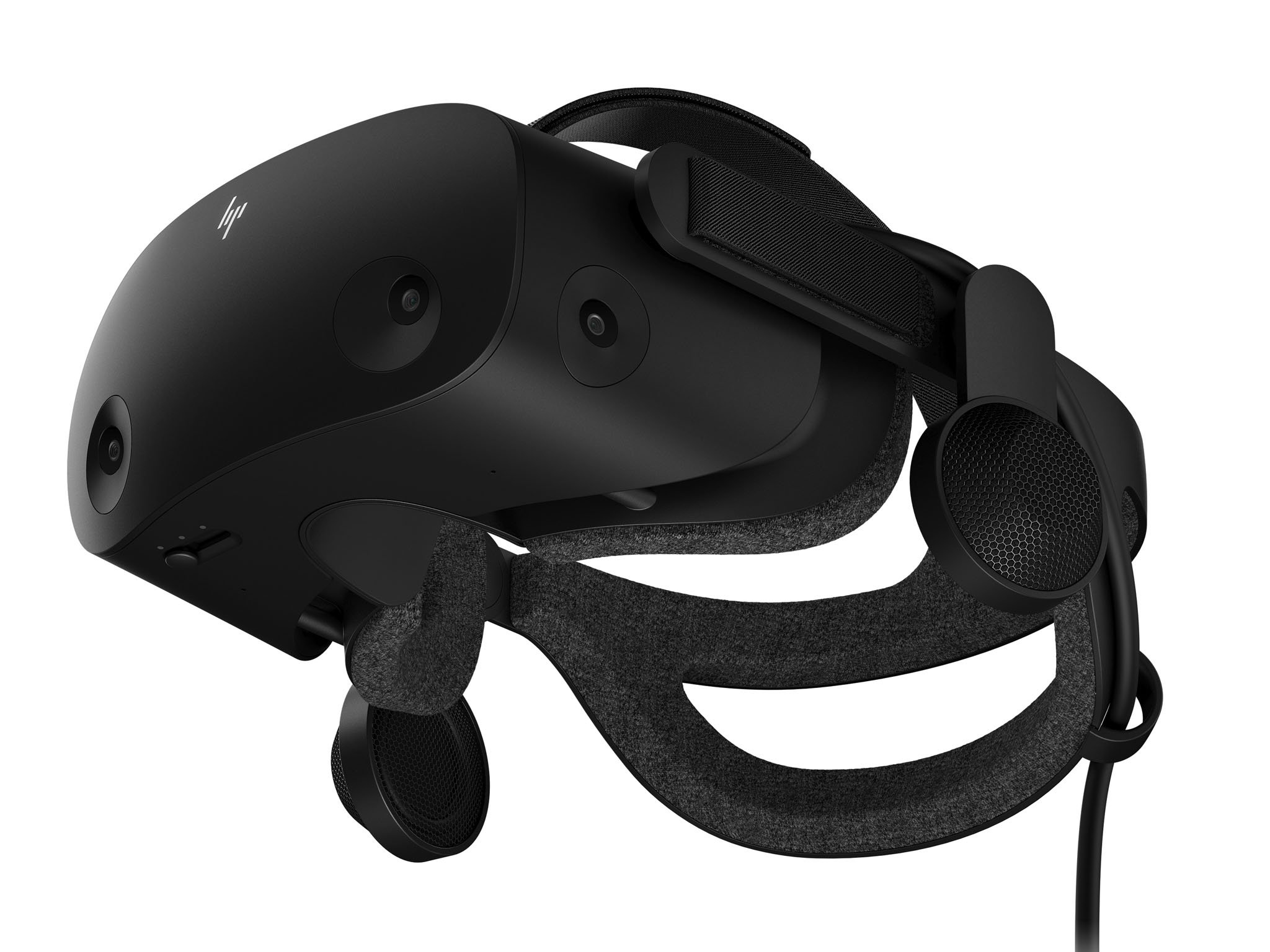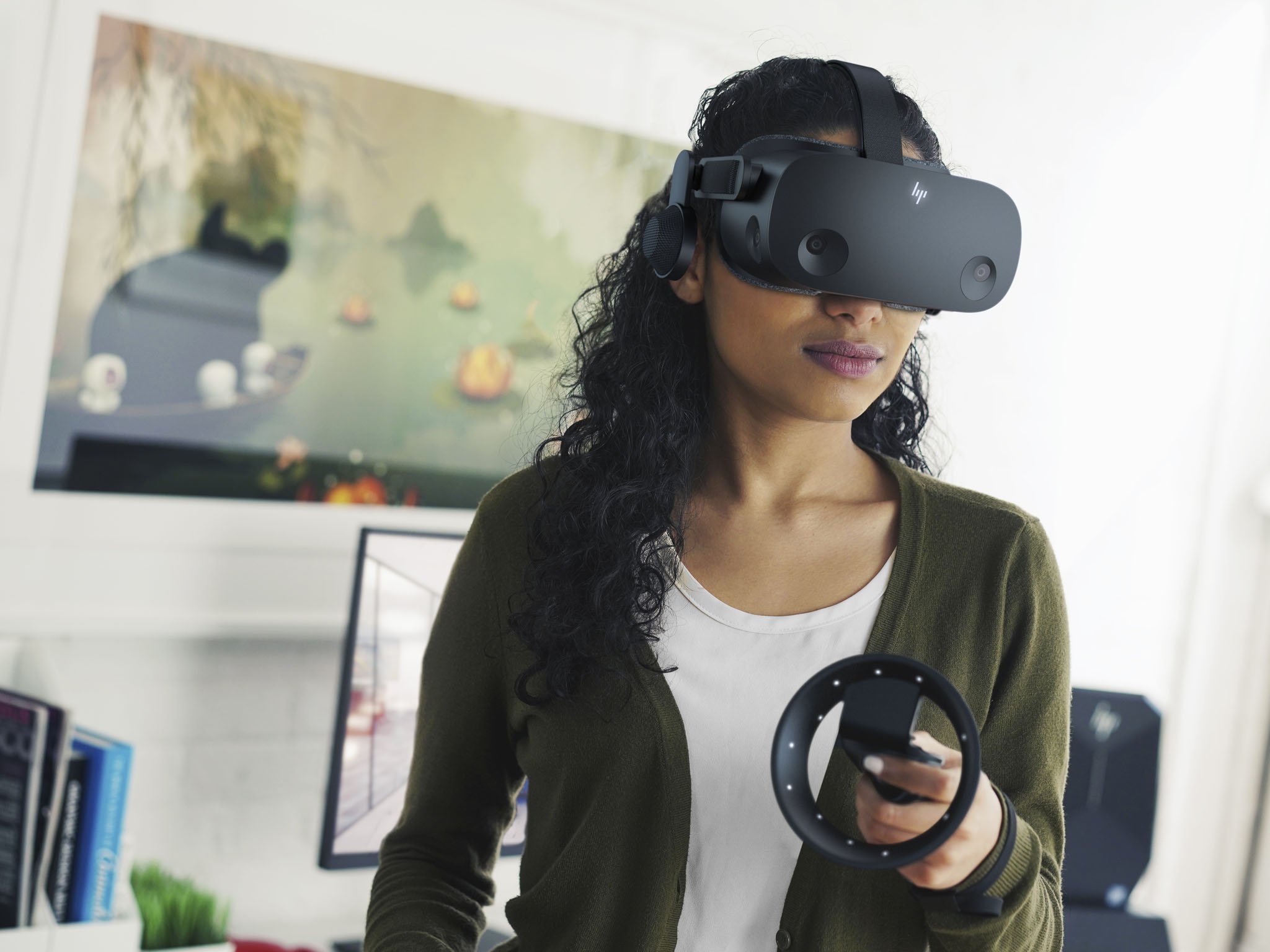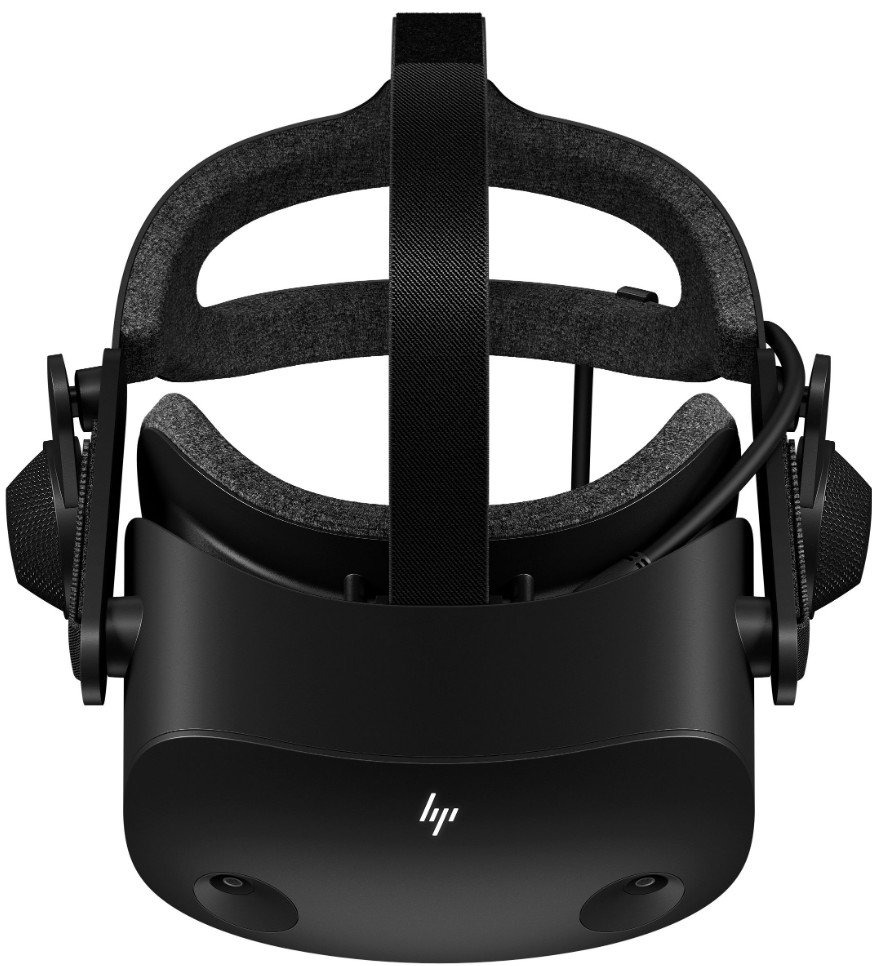HP Reverb G2 brings four-camera tracking to its next-gen Windows Mixed Reality headset
Valve, Microsoft, and HP have teamed up to make the best Windows Mixed Reality headset ever. Here's why it's so great.

What you need to know
- HP Reverb G2 comes out later this year for $599.
- Valve designed vital components, including the new lenses.
- The Reverb G2 is made for gaming, enterprise, and pro users.
- With new controllers, Reverb G2 is the most advanced HMD for WMR.
HP recently teased a new Windows Mixed Reality head-mounted display (HMD) made in conjunction with Microsoft and Valve. Today, the company is revealing the device, dubbed HP Reverb G2, in all its glory, bringing a new level of virtual reality (VR) immersion not seen before.
Although not expected until the Fall, HP is now taking pre-orders to meet user demand (HP Reverb G1 was challenging to buy).
Here's what's different from Reverb G1 and why it is so impressive.
HP Reverb G2 specs and features
The Reverb G2 builds off the original Reverb's excellent design, which we reviewed last year, but improves upon many functions. The hallmarks are the same with 2K by 2K resolution per eye at 90Hz refresh rate with a full six-degrees-of-freedom (FOV) movement. Those features make Reverb the highest performing Windows Mixed Reality headset on the market.
For this year, HP, Valve, and Microsoft brought the following changes to Reverb G2:
- Valve-designed lenses: Valve is bringing its expertise in VR lens making to the Reverb G2, delivering reduced mural, 2160 x 2160 LCD panels per eye at 90Hz. Text and textures are supposed to be more precise with a 114-degree field of view (FOV).
- Manual IPD adjust: Users can now use a wheel to adjust the interpupillary distance (IPD).
- Four-camera tracking: two new cameras on the side aide in motion detection and the two front-facing ones. This change gives 1.4x more movement capture over Reverb G1.
- New controllers: New optimized button layout that more closely resembles a gaming controller. The design is more ergonomic, and is it supposed to be more natural.
- New headphones: Reverb G2 has built-in headphones like the previous model, but these are newly designed and sit 10mm off the ear for more comfort, making them "more spatial audio ready." HP claims they use its new spatial audio format "anchored in artificial intelligence, new signal processing, and psychoacoustics." The headphones are still removable, too, in case you want to use your own. Microphones are still built-in and unchanged.
Like the previous version, comfort was a major consideration when designing the Reverb G2. HP worked closely with Valve to ensure there were no paint points. There is now an increased facemask cushion for better weight distribution, and the face gasket can be replaced as well. The headset can also flip 90-degrees when switching between virtual worlds and the real one. Reverb G2 weighs 1.21 pounds (0.55kg) up just slightly from 1.10 pounds (0.5kg) of the original.
There are other smaller changes too. The connector cable is now a single barrel instead of a doubled-one to give more flexibility. That cable also now terminates in the back of the HMD instead of a mid-way (making it harder to accidentally disconnect).
All the latest news, reviews, and guides for Windows and Xbox diehards.
HP is still using USB Type-A and DisplayPort 1.3 for the connectors (versus the Type-A and HDMI of older gen HMDs). HP includes a miniDP adapter in the box. For those who cannot use the Type-A port for power delivery, HP now includes a power adapter for the Reverb G2. It lets users plug it into the wall for added power to allow the headset to reach its maximum resolution.
Gone this year is also the fabric front of the Reverb G1. While that design gave a more personal touch, with the current pandemic and concern over germs, HP preferred a design that could be easily wiped down without concerns over hard-to-clean material.
Users will still need some powerful hardware like an NVIDIA GTX 1080 (or higher) to drive that 2K by 2K resolution at 90Hz refresh rate. If less powerful equipment is used, the system can step down in performance, including resolution and refresh rate.
HP Reverb G2 who is it for?

The last-gen Reverb had two markets with a regular option for consumers and a "Pro" model for enterprise who were using the HMD for training, remote work, and even in hospitals for therapy. There is no pro model this year as companies and consumers can buy the Reverb G2 for gaming or development. As we wrote last year:
Another example of VR in the workplace was an Occupational Safety and Health Administration (OSHA) training simulation. The user must walk around a factory floor, spot potential violations, and choose solutions based on the severity. The experience is quite lifelike, but besides being more enjoyable, research has shown that retention rates of upwards of 75 percent are achieved with such VR training compared to 5 to 10 percent when just reading or watching a video.It's because of these scenarios that HP is seeing significant interest in VR solutions in commercial settings and even outpacing consumer ones.
But consumer VR gaming is also a significant market for Reverb G2, hence Valve's involvement. Valve is no stranger to VR, making some of the most popular HMDs on the market, including Cosmos and Index. Jeremy Selan, an engineer at Valve, noted that they are "happy to see the expansion of the VR ecosystem in a way that is great for high-fidelity gaming. Providing customers with another quality option that includes some of Valve's technology is good news for the VR community, and we are happy to support that."

Although Windows Mixed Reality has not exploded for consumers, Microsoft, HP, and Valve still see a lot of interest from gamers and niche enterprise usage. Microsoft could also make some more announcements around WMR later this year for new features and improvements.
Pricing for the HP Reverb G2 is set at $599, which matches the pricing of Reverb G1. The system includes the HMD, two controllers, a six-meter cable, a DisplayPort to a mini-DisplayPort adapter, and an optional power adapter.
US pre-orders will be available on May 28, 2020, via HP.com, SteamVR homepage, and select channel partners. Pre-orders for select countries will be available over the next few weeks and months.

Super comfortable, super HD
HP's Reverb G2 is now made with the help of Valve and Microsoft. The premium VR headset brings 2K by 2K resolution, 90Hz refresh, new Valve-designed lenses, improved spatial audio, and a massive focus on comfort. It is the ultimate VR headset for Windows Mixed Reality, gaming, or professional use. It's due this Fall, but pre-orders are now live.

Daniel Rubino is the Editor-in-Chief of Windows Central. He is also the head reviewer, podcast co-host, and lead analyst. He has been covering Microsoft since 2007, when this site was called WMExperts (and later Windows Phone Central). His interests include Windows, laptops, next-gen computing, and wearable tech. He has reviewed laptops for over 10 years and is particularly fond of Qualcomm processors, new form factors, and thin-and-light PCs. Before all this tech stuff, he worked on a Ph.D. in linguistics studying brain and syntax, performed polysomnographs in NYC, and was a motion-picture operator for 17 years.


